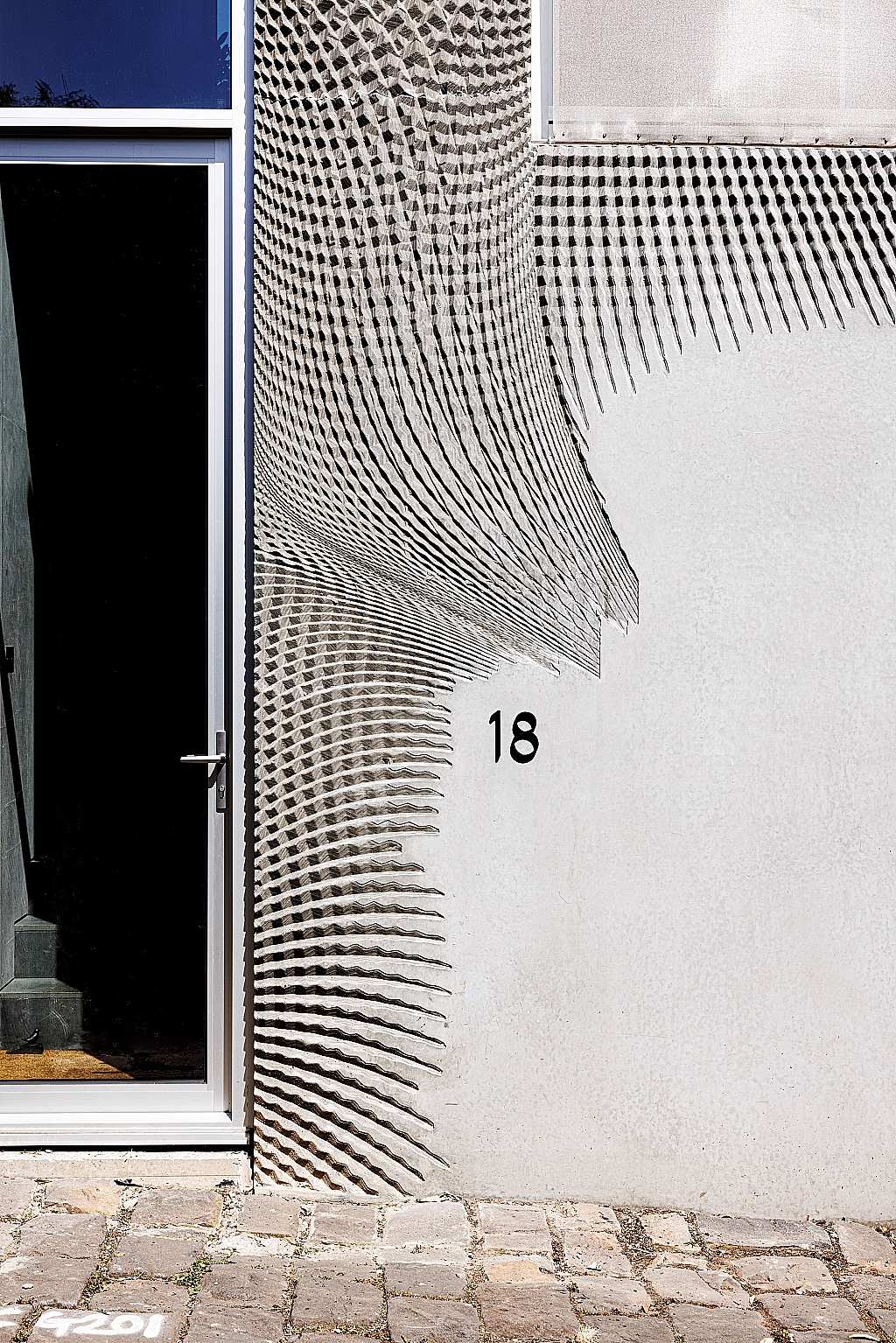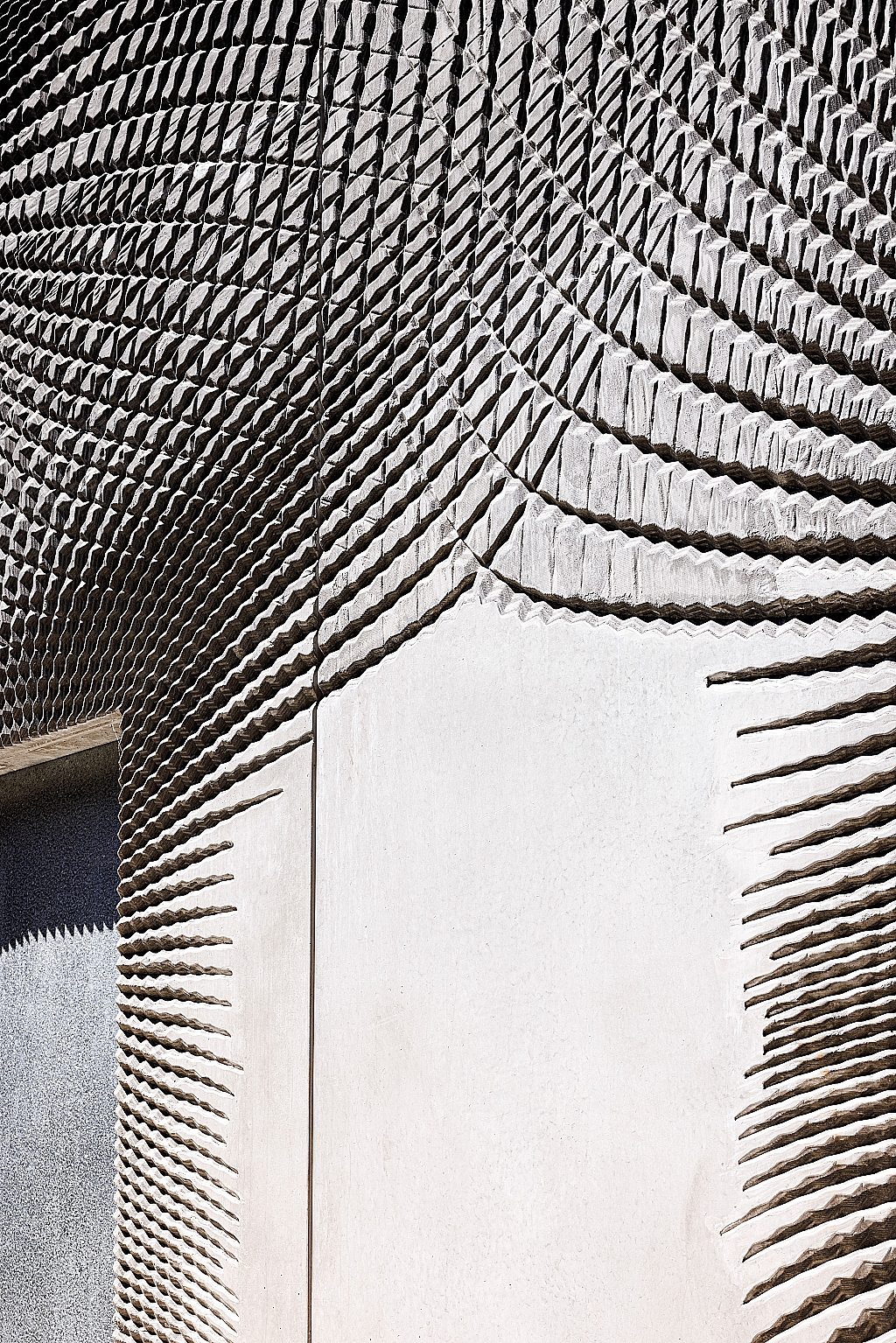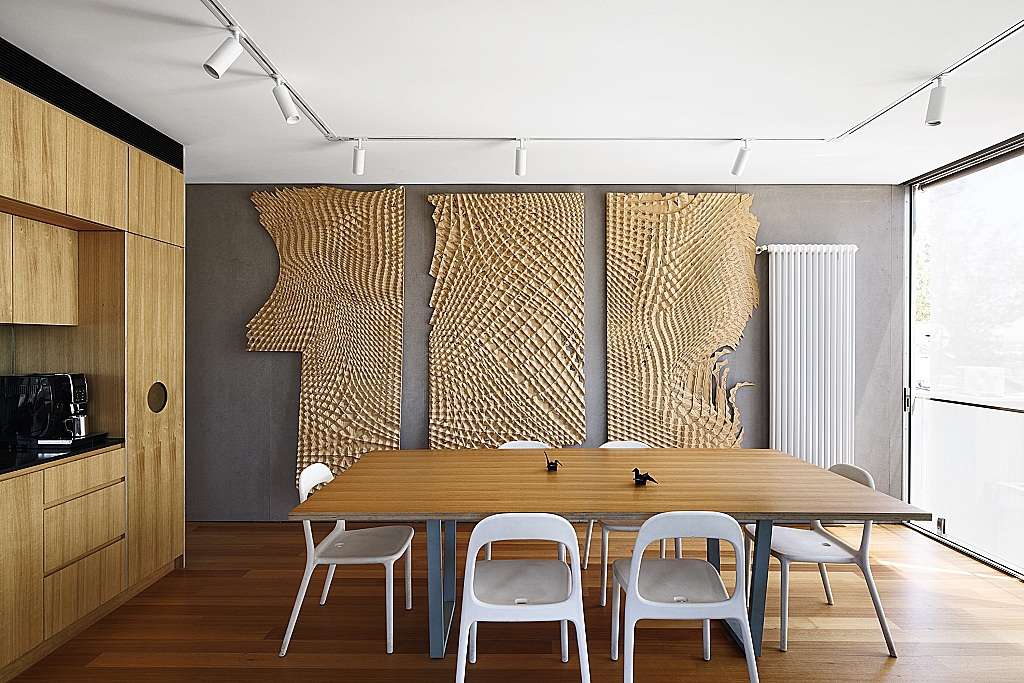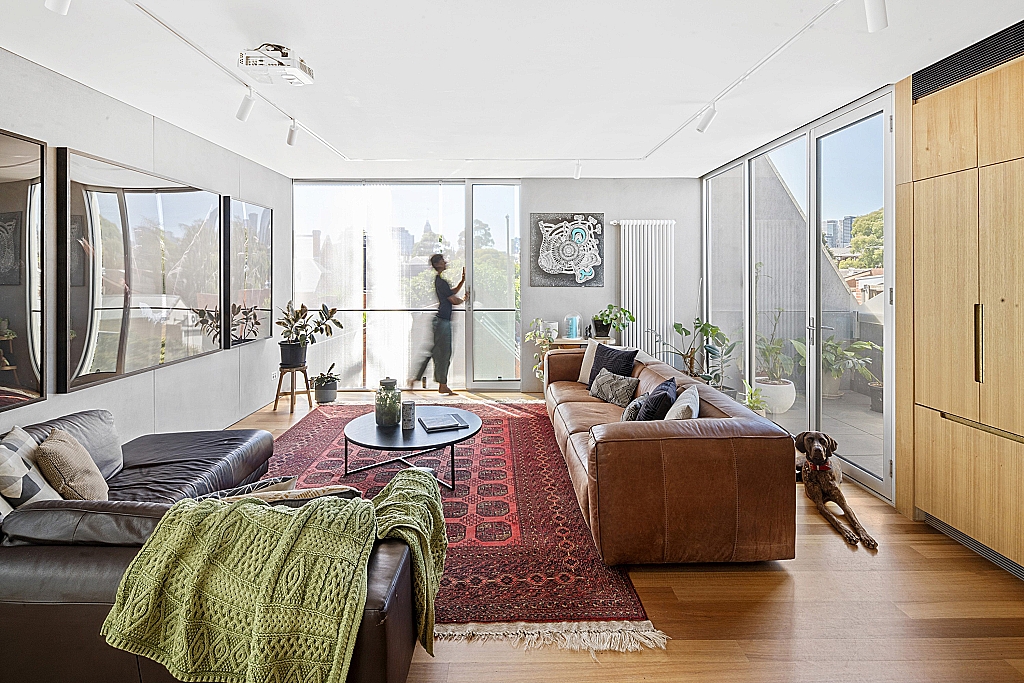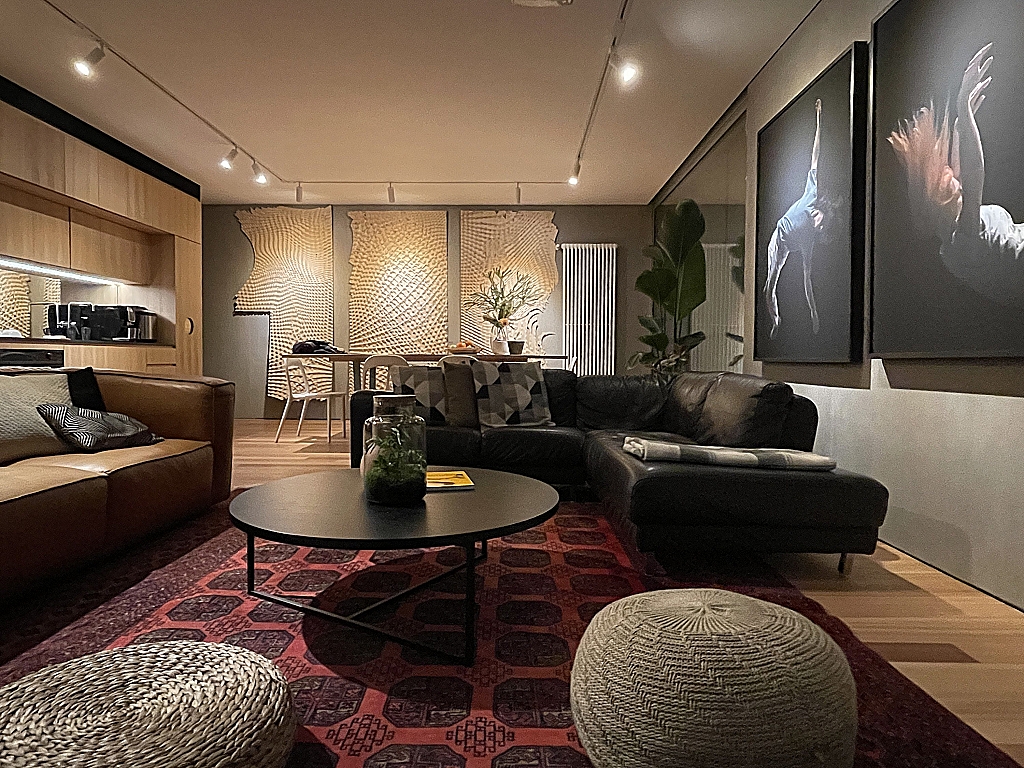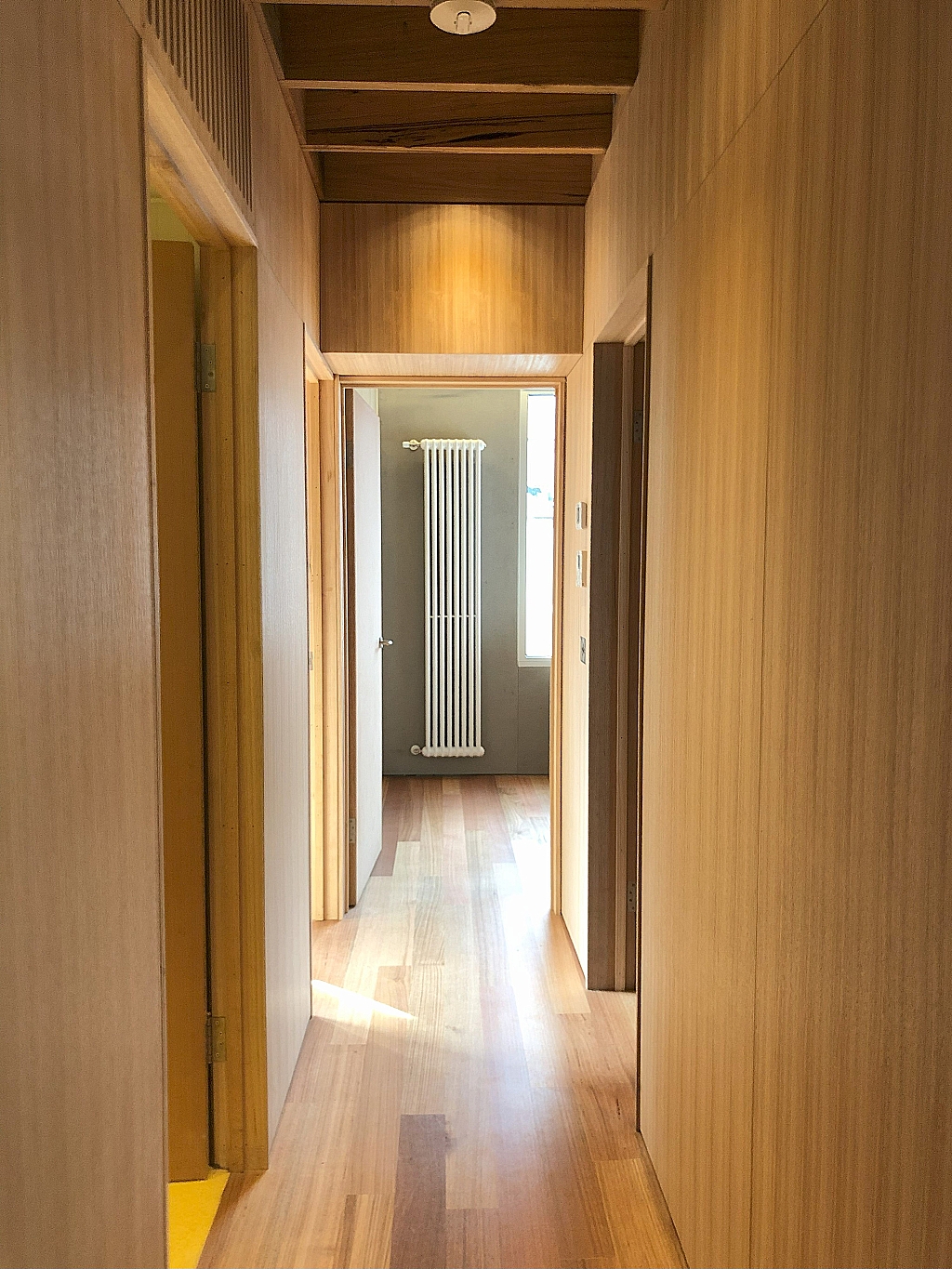House 8 is an experiment in small footprint living, transforming a neglected 8x8m laneway site in North Melbourne into a sustainable single-family home, enriched with the qualities of the heritage urban fabric surrounding it.
Enclosed by laneways on three and a half sides House8 is surrounded by a mix of brick warehouses, historic houses, and some contemporary infill housing. A simple three-story extrusion covers the whole site, with the south-east corner cut back to minimize over shadowing of properties abutting the rear of the site. The small site and 100% site cover precluded the use of scaffolding, leading to the selection of pre-cast concrete as the principal structure and external skin of the project.
This concrete skin is articulated with a continuously differentiated surface pattern where the whole façade to be designed as a single composition, rather than a repeating or modular pattern. The pattern developed for this project reinterprets features of the historic buildings in the surrounding area; specifically, how facades of these historic buildings have increased surface articulation in areas around windows and doors to draw visual attention and to deflect water and dirt away from openings. A digital script was developed to reinterpret this contextual trait, producing fields of increased surface articulation near windows and doors and turbulence in areas of interaction of these fields in a digital model of the building. Working closely with RMIT Robotics Lab, this complex surface pattern was CNC milled into plywood panels used as moulds for the precast concrete wall panels, referencing and transforming contextual information and a brutalist tradition of articulated concrete through digital design tools and advanced fabrication.
The design also adapts the historic warehouse ‘loft’ typology of the surrounding warehouses, with a column free interior and services & circulation pushed to the southern boundary to maximise flexibility. The current configuration of the house includes a self-contained apartment, garage/laundry on ground level; two bedrooms, two bathrooms and a study/guest bedroom on the second level; kitchen, dining, living room and a small terrace on the third level. An outdoor stair from the third level, provides access to a ‘green roof’ planted with a mix of native and introduced food plants and small shade trees.
The exterior concrete shell of the building is structurally independent of the timber framed interior walls and allowing the building to be easily modified to suit new needs without complex structural or services works. This robust and adaptable approach maximises the life of the building and ensures that the embodied environmental impact of the project is mitigated over the maximum amount of time, rather than being lost when the project no longer fits the purpose it was originally designed for.
Introducing a new family home on a small inner-urban site that had been vacant for many years, reduces environmental caused by the consumption of land at the urban periphery and significantly reducing direct and indirect transport related impacts. Optimised passive-solar design, high performance materials and the inclusion of the green roof minimises operational impact and enhances local ecological systems., through the through the addition of pollinating plants and shade trees, in addition to acting as a stormwater detention and filtration system. Operational waste is minimised through use of vermicompost for kitchen waste and conventional composition for garden waste, reintroducing nutrients to the green roof,
House 8 is a study in innovative compact inner-city infill housing, exploring the adaptation of historic building types through the application digital design tools and advanced manufacturing in Architecture. A small home with a very tight budget, the project demonstrates the potential and economic value of utilising small previously undeveloped inner-urban sites as a model for infill housing.
The journey of building the North Melbourne house was featured in Episode 8, Season 10 of Grand Designs Australia, available to stream on demand via Foxtel.

